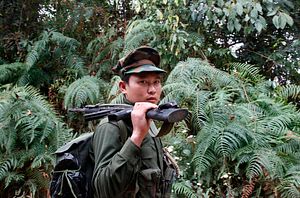When Aung San Suu Kyi’s National League for Democracy (NLD) swept to power in the November 2015 general elections in Myanmar, she noted pointedly that securing peace in the country would be her top priority. “We can do nothing without peace in our country,” she said in a speech to mark Independence Day in January 2016.
Even at the time, those familiar with the dynamics of peace and conflict in Myanmar could have been forgiven for being skeptical. For decades, fighting has been ongoing between the state and a diverse array of ethnic groups over myriad issues, including political autonomy, economic development, and a recognition of their cultural diversity. Broader governance issues in the country, from changing civil-military dynamics to conceptions of center-periphery ties, have also complicated how to manage peace and conflict.
So it should come as no surprise that as Myanmar moves toward its next election in 2020, it is clear that securing peace in the country has proven much more challenging to actually implement in practice. Peace in Myanmar is elusive due to a series of challenges, most notably internal disagreements between ethnic groups; violence in various parts of the country, including in Rakhine state; and the role of outside powers, which complicates Naypyidaw’s ability to continue to manage the complex conflict dynamics in the country.
Internal Disagreements
The first challenge for securing peace in Myanmar has been internal disagreements. While securing a Nationwide Ceasefire Agreement (NCA) is a key government priority within the peace process, in reality the NCA aspect of the peace process has been in limbo for nearly seven months, if not more. It has been difficult to bring all groups into the fold of the NCA, let alone getting to further political dialogue and moving ahead on forming a federal union. This is due to a series of factors, including leadership changes within the signatory groups, deadlocks in the formulating of common positions, the fundamental lack of a negotiation strategy to resume dialogue, and differences observed between the government and the Tatmadaw, Myanmar’s military.

































